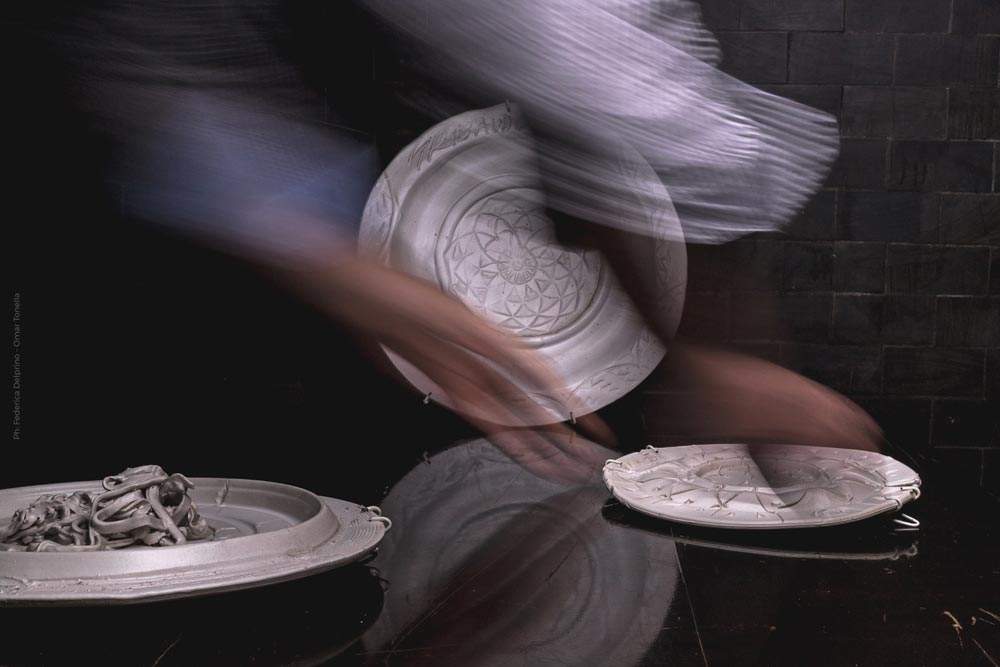Ezio Gribaudo returns to dialogue with Asger Jorn. The exhibition-tribute in Albissola Marina
It is a true “return” to Casa Jorn the exhibition that, precisely, the Casa Jorn Museum in Albissola Marina is dedicating to Ezio Gribaudo (Turin, 1929), an artist and art publisher who was a friend and collaborator of Asger Jorn (Vejrum, 1914 - Aarhus, 1973), whose several works he published, including 1974’s Le Jardin d’Albisola, the only writing by Jorn explicitly dedicated to his garden and his house in Albissola Marina.
The exhibition, entitled Return to Casa Jorn. A Homage to Ezio Gribaudo, runs from June 7 to September 8, 2019, and is curated by Stella Cattaneo and Daniele Panucci: the itinerary displays Gribaudo’s never-before-seen ceramic works. These works originated in the wake of other monochrome research conducted since the Flani and Logogrifi, and represent the lesser-known part of the Turinese master’s artistic research. Together with other coeval works from the 1970s and 1980s, the ceramic plates enter into dialogue with Asger Jorn’s far from monochrome world, reactivating a dialogue between the two protagonists of the twentieth century. The exhibition is completed with a section of documents, photos and rare books, which aim to restore in a tangible way the professional and friendship relationship between the two artists.
The exhibition is organized under the patronage of the City of Albissola Marina and thanks to the contribution and collaboration of the Gribaudo Archives in Turin, which is curating other initiatives related to the anniversary in various public venues in Italy linked to Ezio Gribaudo’s professional and human journey. The exhibition can be visited during the museum’s opening hours: in June and September on Saturdays and Sundays from 10 a.m. to 1 p.m. and 4 to 7 p.m., in July and August on Saturdays and Sundays from 10 a.m. to 1 p.m. and 4 to 8 p.m. The catalog is published by Gli Ori - Editori contemporanei. For info: email amicidicasajorn@gmail.com or call +39 333 1700316. On social: @casamuseojorn #jornhousemuseum.
Ezio Gribaudo is an artist and art editor trained in the rigors of intense graphic art studies, at the Brera Academy and later at the Faculty of Architecture of the Polytechnic University of Turin. With his artwork made through various media and mixed techniques, as well as traditional painting tools, he moved from graphic art to sculpture and painting, with the means of the modern printing industry, later replaced with manual presses echoing the more artisanal dimension of his work. After a beginning characterized by a figurative, non-abstract style, Gribaudo expanded his pictorial interests to include multiple materials and techniques, resulting in flans and logographs. The white monochromatisms elaborated in typography were made using the matrices and techniques of serial reproduction with flani, scraps from the production of newspapers and editorial texts, thus going beyond traditional painting techniques. In the 1960s, he developed logogryphs, or typographic imprints on buvard paper, devoid of ink and embossed (embossing), demonstrating how the relationship between text and image is fundamental in his work. Gribaudo won the prize for graphic design at the XXXIII Venice Biennale (1966) precisely with logogryphs, whose concept is based on the linguistic play of a logos passing through verbal and imaginal rebuses, where grifo means “fishing net.” Logogryphs then gave rise in turn to multiple material and verbal developments such as metallogryphs and saccogryphs. Within this metamorphosis of techniques, a use of writing as art continues to return.
 |
| Ezio Gribaudo returns to dialogue with Asger Jorn. The exhibition-tribute in Albissola Marina |
Warning: the translation into English of the original Italian article was created using automatic tools. We undertake to review all articles, but we do not guarantee the total absence of inaccuracies in the translation due to the program. You can find the original by clicking on the ITA button. If you find any mistake,please contact us.




























